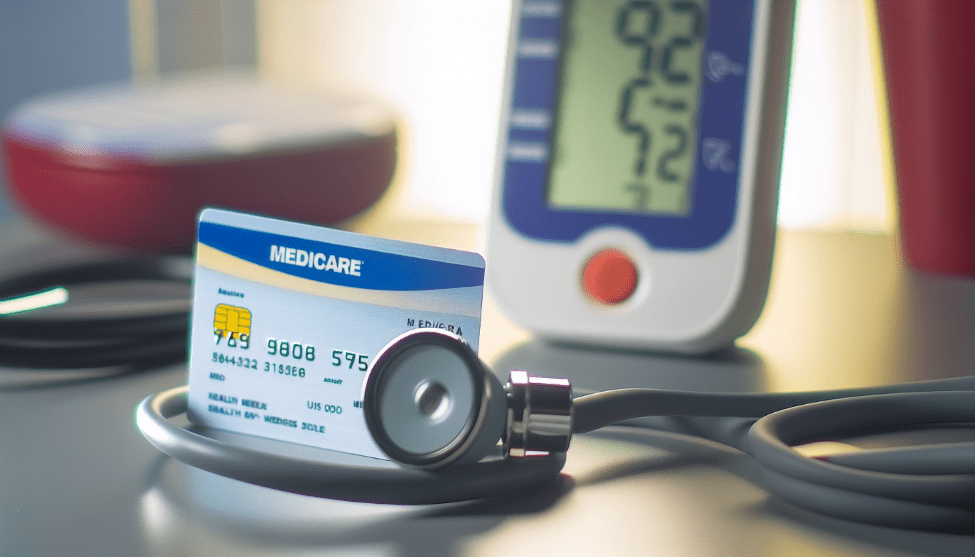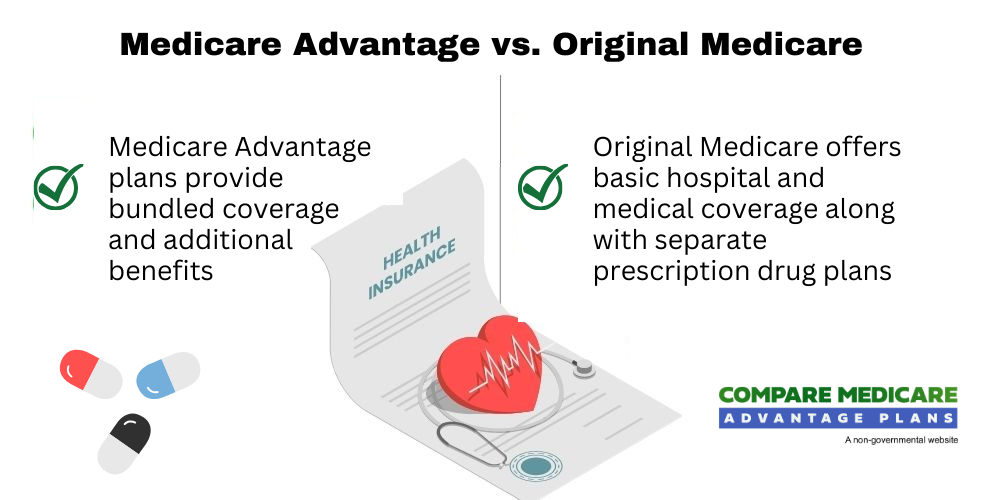Does Medicare Cover Blood Pressure Monitors?
When it comes to understanding Medicare and blood pressure monitors, you might wonder if Medicare covers blood pressure monitors.
The coverage may be selective – ambulatory blood pressure monitors could be covered under Part B with a prescription, while home monitors might not be. This article breaks down when you could expect coverage, what costs might be involved, and how to maximize your potential Medicare benefits for blood pressure health.
Key Takeaways
- Medicare might not cover home blood pressure monitors unless specific conditions are met, such as in-home renal dialysis, but it may also cover ambulatory blood pressure monitors once a year when prescribed by a physician.
- Beneficiaries may be responsible for at least 20% of the Medicare-approved amount for covered blood pressure monitors under Part B after meeting their deductible and may be able to opt for supplemental Medigap insurance or Medicare Advantage plans for potential additional coverage.
- Affordable blood pressure monitoring options for those that might not be covered by Medicare may include using free public blood pressure machines available at pharmacies and retail stores or purchasing over-the-counter monitors.
Compare Plans in One Step!
Enter Zip Code
Navigating Medicare Coverage for Blood Pressure Monitoring Devices
With the potential Medicare coverage for blood pressure monitors, there’s a range of devices, from home monitors to ambulatory ones, which leads to varying coverage. While home monitors might not be covered, there could be exceptions.
For instance, if you’re undergoing in-home renal dialysis, Medicare may cover your home blood pressure monitor. It’s all about understanding these nuances to make the most of your potential Medicare benefits.
Ambulatory blood pressure monitors, which take readings periodically throughout the day, could be another exception. Medicare may cover these devices once a year if prescribed by a doctor. Bear in mind that coverage details may be subject to change. Therefore, consulting with your doctor or Medicare provider for your specific coverage details is advisable.

Home Blood Pressure Monitors: A Closer Look
Home blood pressure monitors could offer numerous advantages like improved hypertension management, early detection of blood pressure changes, and decreased need for frequent doctor’s appointments.
However, Medicare might not cover these devices unless specific criteria are met, such as undergoing in-home renal dialysis. Home blood pressure monitoring could be a valuable tool for patients, but it will likely be essential to be aware of the potential limitations when it comes to insurance coverage.
When selecting a home monitor, you might want to consider possible factors such as the readability of the display, especially in low-light conditions, and the types of monitors available. Given the lack of Medicare coverage for these devices, the price could be a significant factor.
Fortunately, certain over-the-counter devices that don’t require a prescription may be available and could be a cost-effective choice.
Ambulatory Blood Pressure Monitors and Medicare
Ambulatory blood pressure monitors will likely be designed to periodically measure blood pressure readings throughout the day, which could provide valuable insights into blood pressure fluctuations that might not be captured with a single reading at the doctor’s office.
Medicare understands the importance of these devices in accurately diagnosing hypertension and, therefore, might provide coverage for ambulatory monitors on an annual basis when prescribed by a physician. Ambulatory blood pressure monitoring could be an essential tool for healthcare professionals to better understand their patients’ blood pressure patterns.
Under Medicare Part B, beneficiaries may be responsible for up to 20% of the Medicare-approved amount for renting an ambulatory blood pressure monitor, after meeting their deductible. This means that while Medicare might provide some coverage, some costs may fall onto the individual.
Understanding Part B’s Role in Blood Pressure Monitor Coverage
Medicare Part B might cover the cost of a blood pressure monitor for eligible individuals, but it might not extend to additional services such as installation or maintenance of the monitor. If a blood pressure monitor has been covered, you may be required to procure it from a Medicare-approved supplier, who could then file a claim to Medicare for repayment.
You may be responsible for a portion of the cost, depending on your plan specifics, so it’s essential to consult with your doctor’s office for guidance.
If Medicare Part B does not cover a blood pressure monitor, you may explore the option of acquiring the device through a private insurance plan where blood pressure monitors may be available, or could potentially cover the out-of-pocket costs. It’s all about finding the best fit for your health needs and financial situation.
The Costs Involved with Blood Pressure Monitors Under Medicare
When considering a home blood pressure monitor, if you’re fortunate enough to have coverage, Medicare beneficiaries may only have to pay an average copay cost of about 20% of the Medicare-approved amount, after meeting the Part B deductible.

While the costs that could be associated with blood pressure monitors might seem daunting, remember that keeping your blood pressure under control could be a crucial step in preventing more costly healthcare issues down the line, such as heart disease and stroke.
What You Pay: Blood Pressure Monitor Costs with Medicare
When it comes to potential costs, Medicare coverage may vary. While the program could cover ambulatory blood pressure monitors, beneficiaries may still be responsible for at least 20% of the Medicare-approved amount after meeting their deductible. This could imply that the cost of ambulatory monitors might not be entirely covered, and you will likely have to bear some part of it.
On the other hand, home blood pressure monitors might fall outside the scope of Original Medicare coverage, requiring individuals to bear the full cost independently. So, while these devices could offer convenience and regular monitoring, they may also come with an out-of-pocket cost.
Supplementing Your Coverage: Medigap and Blood Pressure Monitors
If you’re finding the costs that could be associated with blood pressure monitors a little steep, don’t despair. Medigap, a supplemental insurance plan, could help offset deductibles, coinsurances, and copayments for blood pressure monitors, possibly reducing the financial burden on beneficiaries.
For individuals meeting Medicare’s eligibility criteria, Medigap may help cover certain deductibles, coinsurances, and copayments linked to ambulatory blood pressure monitors.

This could potentially result in substantial cost savings, making blood pressure monitoring more accessible and affordable. Enrolling in Medigap may be completed by calling one of our licensed agents at 1-833-641-4938 (TTY 711), Mon-Fri 8 am-9 pm EST.
Additional Coverage Options: Medicare Advantage and Blood Pressure Monitors
Sometimes, Original Medicare might not provide the coverage you need for your blood pressure monitoring. In these cases, some Medicare Advantage plans may offer help. Some of these plans may offer additional coverage for blood pressure monitors by potentially providing an over-the-counter stipend, which could be utilized to purchase specific health items.
Some of these Medicare Advantage plans might be a more comprehensive option for individuals seeking to monitor their blood pressure. However, just like with Original Medicare, the details of the coverage may differ from plan to plan. Hence, you should carefully examine the specifics of each plan to ensure it aligns with your health needs.
Comparing Coverage: Original Medicare vs. Medicare Advantage Plans
When it comes to blood pressure monitor coverage, there will likely be some differences between Original Medicare and Medicare Advantage plans. Under Original Medicare, ambulatory blood pressure monitors may be covered for once-a-year use when ordered by a doctor. In contrast, some Medicare Advantage plans may offer coverage for blood pressure monitors, but the coverage specifics may vary.

With Original Medicare, individuals might expect to incur out-of-pocket costs such as a yearly Medicare Part B deductible and at least a 20% copay, which may be mitigated by a Medigap plan.
Conversely, certain Medicare Advantage plans may also provide coverage for blood pressure monitors, potentially lowering out-of-pocket expenditures. Hence, it will likely be vital to consider the potential benefits and costs of both options before choosing the plan that best fits your needs.
Where to Get Free or Low-Cost Blood Pressure Checks
If you’re still finding the costs associated with blood pressure monitors a little steep, there may be other alternatives. Free blood pressure machines for public use may be available at:
- pharmacies
- retail stores
- shopping malls
- grocery stores
Pharmacy chains like CVS, Walgreens, Publix, and Macey’s Pharmacy might offer services similar to those found in a doctor’s office.
Additionally, many senior housing communities may also provide complimentary blood pressure testing for their residents. Also, coverage for blood pressure monitors or low-cost checks under Medicaid may vary depending on your state of residence. It would be wise to seek more detailed information from your specific state Medicaid program.
Maximizing the Potential Medicare Benefits for Blood Pressure Health
Beyond blood pressure monitor coverage, Medicare may also offer other benefits that could help manage your blood pressure health. During the annual wellness visit covered by Medicare, a physician will likely evaluate your health risks, measure your blood pressure, and conduct other routine assessments.

Medicare may also provide coverage for remote physiological monitoring services designed for hypertension management, possibly offering an effective method for maintaining optimal blood pressure levels. While Original Medicare might not cover hypertension medications, these may be included in Medicare Part D plans.
How to Choose a Medicare-Compatible Blood Pressure Monitor
In choosing a blood pressure monitor, you might want to consider aspects such as:
- Type
- Features
- Cost
- Compatibility with Medicare coverage, which may cover blood pressure monitors
Blood pressure monitors fall into two primary categories: manual and digital.
Some potential features to consider when selecting a Medicare-compatible monitor may include memory storage, an irregular heartbeat detector, a cuff size indicator, and a hypertension indicator.

Some of the highest-rated blood pressure monitors compatible with Medicare might include the Greater Goods Balance Bluetooth Blood Pressure Monitor Kit 0604, iHealth Track Blood Pressure Monitor, Omron Upper Arm Gold Blood Pressure Monitor, and A&D Medical Upper Arm Blood Pressure Monitor.
The Importance of Regular Blood Pressure Monitoring
Consistent monitoring of blood pressure could be pivotal for maintaining overall health. This may provide accurate tracking of blood pressure over time, which could allow healthcare providers to:
- Assess the effectiveness of treatment
- Manage high blood pressure
- Evaluate the success of interventions
- Work towards achieving blood pressure targets.
For hypertensive patients, the suggested blood pressure monitoring interval is every 3 to 6 months, once the blood pressure is at goal and stable. However, if an elevated blood pressure was observed, follow-up should be conducted within a month as per current guidelines.
By monitoring blood pressure trends, physicians can:
- Identify patterns and fluctuations
- Make informed decisions about medication adjustments
- Recommend lifestyle modifications to effectively manage and control blood pressure levels.
Summary
The path to understanding Medicare’s coverage for blood pressure monitors may be filled with nuances. From home monitors to ambulatory devices, the type of monitor and your health needs could play a significant role in determining coverage.
While Medicare might provide some coverage, beneficiaries will likely be responsible for a portion of the costs. However, supplemental plans like Medigap and Medicare Advantage may help offset these costs, possibly making blood pressure monitoring more accessible and affordable.
Regular blood pressure monitoring could be a crucial step in maintaining overall health and managing hypertension. It’s about understanding your potential coverage options, utilizing available resources, and making informed decisions that best suit your health needs. Remember, investing in your health today could prevent more costly health issues down the line.
Frequently Asked Questions
→ Can you get a blood pressure monitor through Medicare?
Yes, Medicare might cover some of the costs of an ambulatory blood pressure monitor for use once a year when ordered by a doctor, but it may not cover regular “cuff” blood pressure monitors for home use, except for people undergoing dialysis at home.
→ How can I get a free blood pressure monitor?
You could get a free blood pressure monitor by signing up for Hello Heart, which might send you a monitor that connects to an app on your smartphone, making it easier to track and manage your blood pressure.
→ Do you need a prescription for a blood pressure monitor?
No, you likely won’t need a prescription for a blood pressure monitor. You may purchase one at a local pharmacy, medical supply store, or online.
→ What is the difference in coverage for blood pressure monitors between Original Medicare and Medicare Advantage plans?
Under Original Medicare, ambulatory blood pressure monitors may be covered for once-a-year use when ordered by a doctor, whereas certain Medicare Advantage plans may provide more extensive coverage for blood pressure monitors. This could mean that some Medicare Advantage plans may offer broader coverage for blood pressure monitors compared to Original Medicare.

ZRN Health & Financial Services, LLC, a Texas limited liability company



